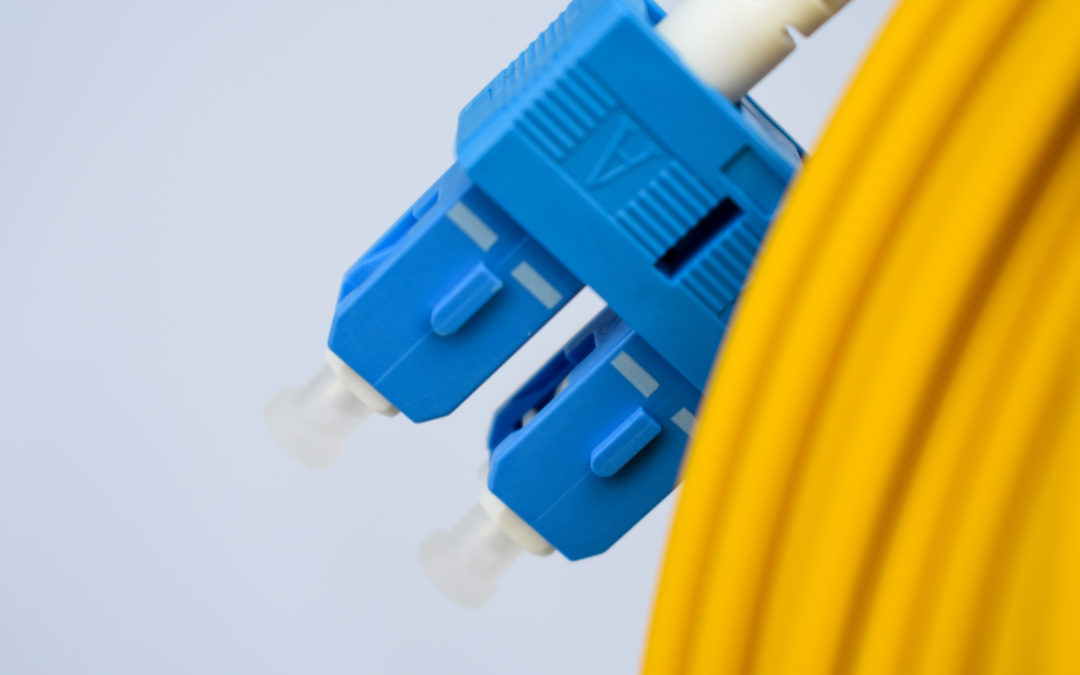In January 2021, 4.66 billion people were actively using the internet worldwide. That’s about 60% of the global population. The countries with the highest internet penetration rate worldwide are the UAE, Denmark, and Sweden. But here’s more: the vast majority connects to internet via Fiber Optics. Do you know why? Because of its fast speeds.
Fiber optic speeds vary in function of the network equipment, design, structure, and constraints. They can have plastic or glass cores. Plastic fibers are made of polymethylmethacrylate, polystyrene, or polycarbonate and they come at advantageous prices, they are lightweight and have great flexibility, but they don’t perform that well in extreme temperatures. Fiberglass has fewer losses, but it implies some additional costs, compared to plastic.
The last two decades demonstrated that fiber optics has become an important competitor to other telecommunication systems. Used in f.e. LANs to achieve high signal quality rates, optical networks offer high bandwidth thanks to fiber optic speeds and capacity. With its ability to send and receive high capacity information at low power, fiber optics will expand even more in the coming years.
The World’s fastest Internet speed
Fiber optic cables allow virtual information to be transferred from a data center to another in no time. The copper cable used electrical, modulated signals for transferring data, while fiber uses light pulses along the plastic or glass strands. That’s why fiber optic cable internet speed will always be higher: the speed of light transmission cannot be compared to an electrical signal.
Limitations of fiber optic internet
It sounds too good to be true, isn’t it? As with any other technology there are limitations that might interfere with the high-speed fiber optics promises.
- The cost of fiber optic internet is higher than cable internet.
- While it is true that fiber optic cables have very high download speeds, they are dependable on the servers that offer website services; the lower the quality of the download link, the slower the download speed.
Single Mode and Multimode speeds
Single mode fibers are mostly used at 1310 wavelength and they are very responsive over long distances. In Single Modes, light passes without refraction. The core diameter of these cables is very small, about 9 micrometers (µm) and can only send one beam of light. However, the data transfer rate is not related to the thickness of the single-mode fibers. The important factor that directly affects the speed is the refractive index which allows light to be emitted directly.
Multimode fiber has a core diameter that ranges from 50 to 62.5 microns. The dimension of the core allows multiple signals to pass simultaneously. This creates several modes of diffusion. The bandwidth is reduced, which minimizes transmission distance in multimode fibers. Multi mode fibers support shorter distances due to their larger core diameters and use LEDs to create light pulses.
Most fiber optic cables have a bandwidth capacity of 1Gbit/s, which is the typical fiber optic maximum speed. Fiber optics is indeed the fastest network offering symmetric upload and download speeds in gigabit scales (up to 10 gigabit per second). The bandwidth is constantly increasing and we can say with confidence that we expect fiber optic cable maxim speed to increase at a range of 100Gbps.
Take a look at our fiber optic components and get in touch! We can help you choose personalized solutions that will improve your business’ network connectivity and efficiency.


